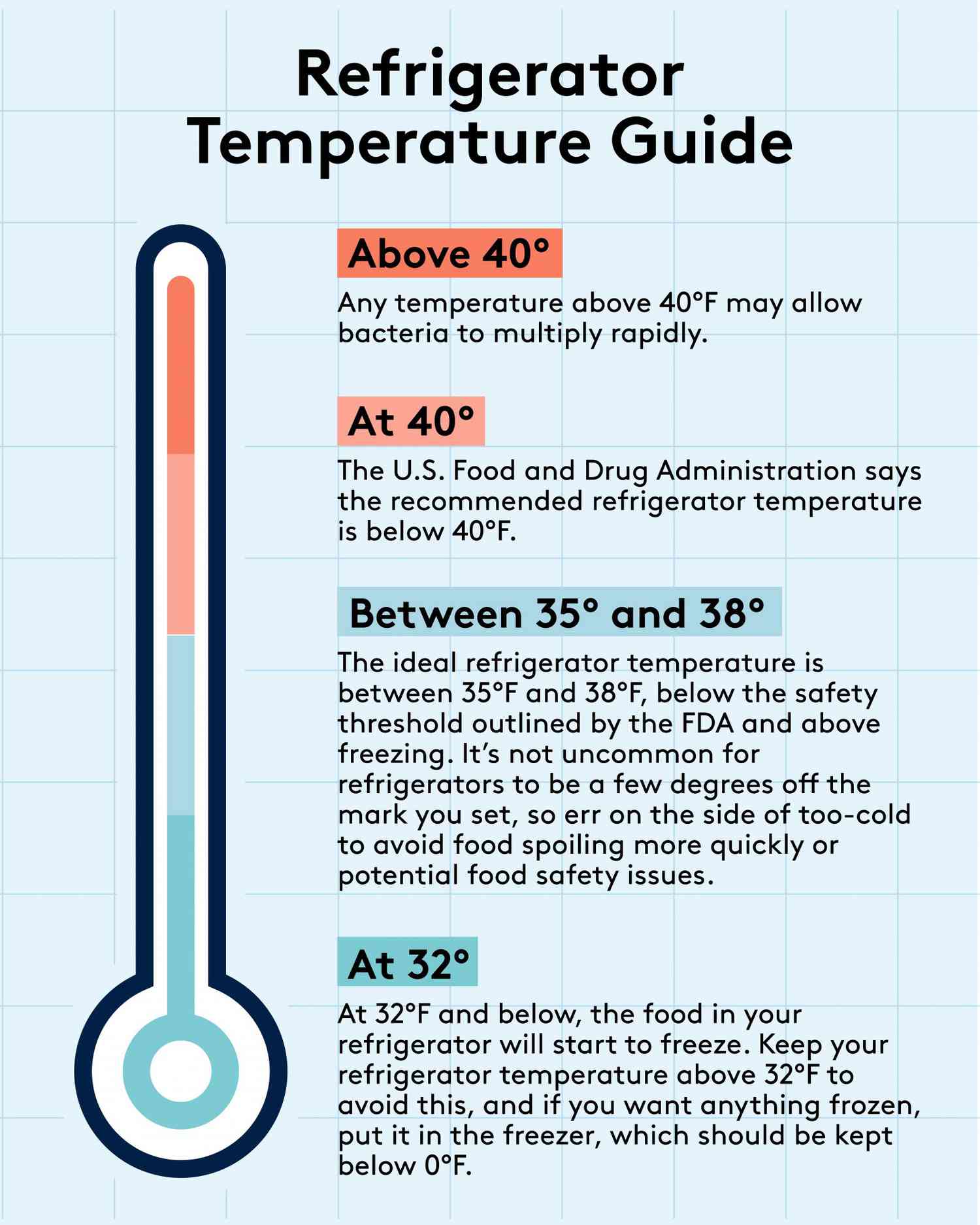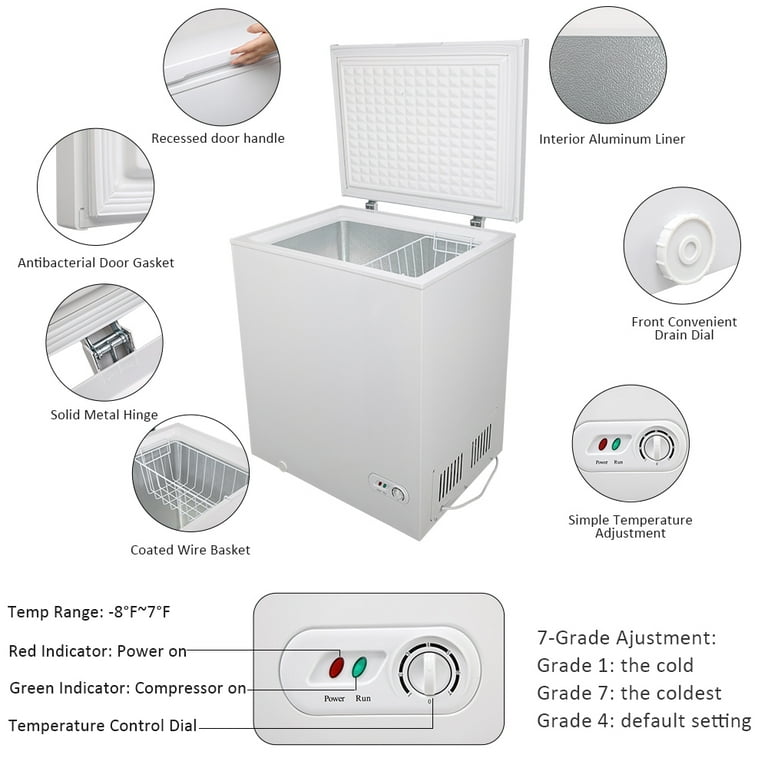Deep freezers typically operate at temperatures between -18°C and -22°C (-0.4°F to -7.6°F). This range ensures optimal preservation of food.
Deep freezers are essential for long-term food storage. They keep food items fresh and safe for extended periods. The low temperatures slow down bacterial growth, preventing spoilage and maintaining nutritional value. Proper temperature settings are crucial to ensure the freezer functions efficiently.
Using a deep freezer can reduce food waste and save money in the long run. Regular maintenance and monitoring of the temperature are vital for optimal performance. Investing in a reliable deep freezer is a smart choice for households and businesses needing to store large quantities of perishable items.
Ideal Temperature Range
The ideal temperature for a deep freezer is 0°F (-18°C). This keeps food safe and fresh. Adjust the thermostat to this setting for best results. Avoid frequent opening of the freezer. This helps maintain a consistent temperature.
Freezing food at 0°F (-18°C) stops bacteria growth. This temperature preserves food quality and taste. Lower temperatures can cause freezer burn. Higher temperatures might spoil the food. A consistent 0°F (-18°C) is the best choice.
Impact On Food Quality
A deep freezer keeps food very cold. This cold temperature helps keep food fresh. Vitamins and minerals stay in the food. The food does not spoil as fast. Cold temperatures stop bacteria from growing. This makes food last longer.
Freezing food can change its texture and taste. Some foods stay the same. Others may become soft or mushy. Fruits and vegetables can lose their crunch. Meats can stay tender. The taste of frozen food is often the same. But, storing food too long can change its flavor.
Energy Efficiency
Deep freezers use a lot of energy. Keeping the temperature steady saves power. Older models use more electricity. Newer freezers are more efficient. Always check the energy rating before buying. Maintaining the seal on the door helps too. A good seal keeps cold air in. It also stops warm air from getting in.
Set the freezer at the right temperature. -18°C is ideal for most foods. Do not overfill the freezer. Air needs to circulate. Keep the freezer in a cool place. Avoid placing it near ovens or heaters. Clean the coils regularly. Dusty coils make the freezer work harder. Use energy-saving modes if your freezer has them. Turn off the freezer when not in use for long periods.

Credit: www.youtube.com
Temperature Fluctuations
Opening the freezer door often can cause temperature changes. Storing too much food can also create temperature fluctuations. Faulty seals and gaskets let warm air in, causing variations. Power outages are another common cause of temperature changes.
Keep the freezer door closed as much as possible. Avoid overloading the freezer with food. Check seals and gaskets regularly for damage. Use a thermometer to monitor the temperature. Fix any issues quickly to maintain a stable temperature.
Storage Tips
Keep similar items together in your freezer. Label all containers with the date and contents. Use clear bins to see items easily. Shelves and baskets can help with organization. Place the newest items at the back. This helps you use older items first. Stack flat items to save space. Make sure everything is sealed tightly to prevent freezer burn.
Leave space between items for air to circulate. Overloading can cause uneven cooling. This can spoil your food. Fill your freezer only up to 75% capacity. This helps maintain the right temperature. Avoid putting hot items directly in the freezer. Cool them first to room temperature. This helps keep the freezer efficient. Regularly check and remove any old or expired items.
Maintenance Practices
Cleaning your deep freezer keeps it efficient. Remove all food items. Use a mild soap and water solution. Scrub all surfaces and corners. Dry the interior with a clean towel. This prevents mold and bad smells.
Inspect the door seals regularly. Worn seals cause temperature loss. Close the door on a piece of paper. Try to pull the paper out. If the paper slides out easily, replace the seal. Good seals ensure energy efficiency.
Troubleshooting
Frost buildup inside the freezer is a common problem. Check the door seal for any gaps. Make sure the door closes tightly. Clean the seal if it is dirty.
If the freezer is not cold enough, set the temperature lower. Check the thermostat. Make sure it is working correctly. Look for any blockages in the vents.
Defrost the freezer if there is too much ice. Unplug the freezer and let the ice melt. Clean the interior with a mild cleaner.
For a noisy freezer, check if it is level. Adjust the feet if needed. Tighten any loose parts. Make sure the freezer is not touching the wall.

Credit: www.realsimple.com

Credit: www.walmart.com
Frequently Asked Questions
What Is The Normal Temperature For A Deep Freezer?
The normal temperature for a deep freezer is -18°C (0°F). This ensures food stays frozen and safe for long-term storage.
Is 20 Degrees Ok For A Freezer?
No, 20 degrees Fahrenheit is too warm for a freezer. Freezers should be set at 0 degrees Fahrenheit or lower.
Is Freezer Safe At 10 Degrees?
A freezer set at 10 degrees Fahrenheit is not ideal. Freezers should be at 0 degrees Fahrenheit for safe food storage.
What Is The Temperature Difference Between A Freezer And A Deep Freezer?
A freezer typically maintains a temperature around 0°F (-18°C). A deep freezer goes lower, often reaching -20°F (-29°C). This significant temperature difference helps preserve food for longer periods.
Conclusion
Maintaining the right deep freezer temperature range is crucial for food safety and quality. Aim for temperatures between -18°C and -23°C. Regularly check and adjust your freezer settings. Proper temperature control ensures your food stays fresh and safe for consumption.
Follow these guidelines to maximize the efficiency of your deep freezer.
